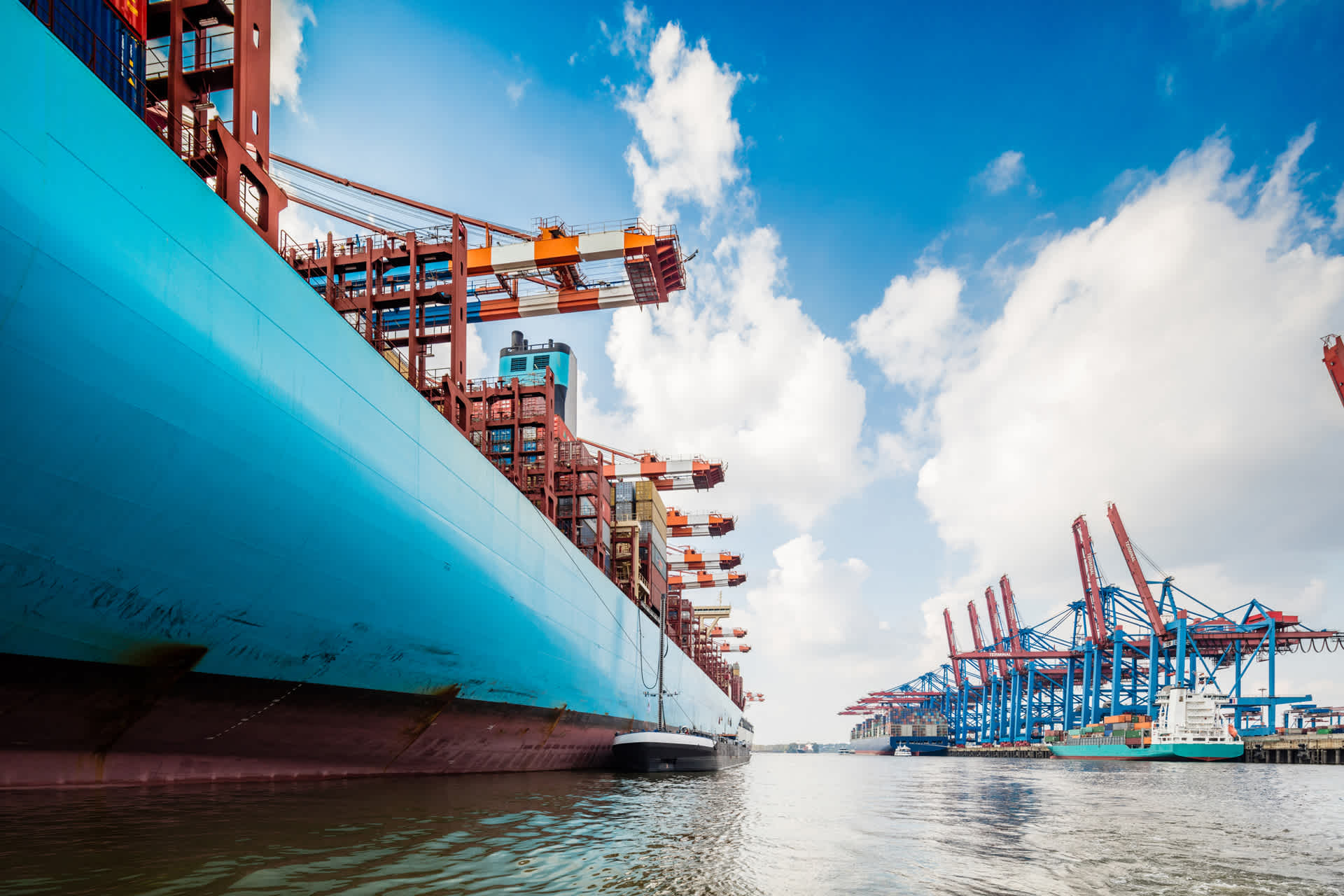Global Logistics Update
Freight Market Update: July 5, 2022
Ocean and air freight rates and trends; customs and trade industry news plus Covid-19 impacts for the week of July 5, 2022.
Freight Market Update: July 5, 2022
European Freight Market Update Live | Tues, August 9 @ 16:00 pm CEST/ 15:00 pm BST
Ocean Freight Market Update
Asia → North America (TPEB)
- Floating rates remain low, relative to long-term fixed rates. Some importers look to move on the floating market instead of contracted space in the short-term, while the shape of the market for the remainder of the year remains uncertain. Vessel capacity continues to further open up. Chassis shortages and inland congestion continue to pose issues. International Longshore and Warehouse Union (ILWU) and Pacific Maritime Association (PMA) labor negotiations continue.
- Rates: Rates remain soft in many major pockets.
- Space: Open, except in a few pockets.
- Capacity/Equipment: Open, except in a few pockets.
- Recommendation: Book at least 2 weeks prior to cargo ready date (CRD). For cargo ready now, importers might consider taking advantage of currently available space and softer floating market rates.
Asia → Europe (FEWB)
- Volumes are picking up as we enter Q3, a trend that is expected to continue. Overall the market is still relatively stable without a major surge in volumes as of yet. There is still a lot of economic and political uncertainty in the European market which is influencing consumer confidence and demand for goods.
- Rates: Rates are mostly extended going into 1H July
- Capacity/Equipment: Overall space is starting to fill up again. Congestion in European ports is causing sailings to return to Asia late, resulting in additional delays and some blank sailings.
- Recommendation: Allow flexibility when planning your shipments due to anticipated congestion and delays.
Europe → North America (TAWB)
- Demand backlog is building up in North Europe ports due to congestion and high yard occupancy. Expect delays in export container deliveries to last through Q3.
- Rates: New peak season surcharge (PSS)/general rate increase (GRI) will be implemented ex-Portugal and Spain in July/August due to severe equipment shortages. Rates in other regions have increased in July due to higher oil prices.
- Space: Still very tight but with some signs of improvement on certain loops for both U.S. east coast (USEC) and U.S. west coast (USWC).
- Capacity/Equipment: Equipment availability remains the biggest challenge for all EU origins, particularly in the Mediterranean basin. Better equipment availability at port, shortages remain at inland depots.
- Recommendation: Book 4 or more weeks prior to CRD. Request premium service for higher reliability and no-roll.
- Read more: There's a massive pile-up of car, furniture exports bound for U.S. and it's spreading across European ports.
Indian Subcontinent → North America
- Demand is expected to increase as we enter the typical Transpacific Eastbound (TPEB) peak season in July. With increased demand we can expect more constrained capacity and rate increases.
- Rates: remain at lower levels compared to peaks just a few months ago while some carriers have already filed General Rate Increases (GRIs) for 2H July and 1H August.
- Space: Available at Freight All Kinds (FAK) rate levels.
- Capacity/Equipment: A rise of equipment deficits are being reported across India. Capacity to USEC is being constrained due to ongoing congestion in Savannah. Vessels are taking longer to return back to India for loading.
- Recommendation: Take advantage of declining rates. In the past carriers have implemented blank sailings to avoid underutilization. This could lead to increased rates on the horizon.
North America → Asia
- Vessel arrivals and available capacity remain fluid for all USWC ports. USEC ports continue to see challenges with vessel congestion and some vessel strings still omitting Charleston and Savannah entirely. A few ocean carriers have advised that rail operations from Chicago over the West Coast have improved and are open to increased volumes. Erratic vessel schedules continue to cause significant challenges with posted earliest return dates and vessel cut-offs at the port.
- Rates: Limited GRI’s for July announced, no advisories for August yet.
- Capacity/Equipment: Deficits on containers and chassis continue to plague Inland Port Intermodal (IPI) origins. Chicago has been the most reliable. Availability for standard equipment at ports has not been an issue for most ports but a large number of carriers have advised of continuing shortages on 40s at the port of Oakland.
- Recommendation: Please place bookings 4 weeks prior to vessel Estimated Time of Departure (ETD).
North America → Europe
- Continuing congestion issues in Europe due to local labor actions at baseports in Germany and the Netherlands. The port of Houston continues to experience significant capacity constraints due to schedule delays and port congestion with one service being reduced from weekly to biweekly. USWC service to Europe remains extremely tight due to void sailings and skipped ports caused by systematic delays. The suspension of Pacific Northwest coverage for North Europe may be lifted in July if the operational situation permits. USWC coverage for Mediterranean ports now has reduced capacity due to one string being phased out.
All carriers have issued a booking stop for shipments to Ukraine, Russia, and Belarus. - Rates: No GRI announced for July and August as of yet.
- Capacity/Equipment: US East Coast capacity to North Europe has capacity available. Deficits are still plaguing many IPI origins. Availability for standard equipment at ports has not been an issue, but special equipment is hard to come by.
- Recommendation: Please place bookings 3 to 4 weeks in advance for East Coast/Gulf sailings and 6 weeks for Pacific.
North America Vessel Dwell Times

Air Freight Market Update
Asia
- N. China: Far East Westbound (FEWB) demand is stronger than that of TPEB due to the tight capacity in the market. The overall market has cooled down compared to last week but is expected to pick back up in these next few weeks. Rates on both tradelanes have decreased slightly this week. For Frankfurt (FRA) bound volume, expect delays of 2-4 days due to manpower shortages.
- S. China: Ex-South China the TPEB market is getting stronger with rates increasing compared to the week prior. FEWB demand increased compared to the week prior, however rates maintain at similar levels as last week.
- Taiwan: Air freight rates are slightly lower than last week however carriers announced a fuel surcharge increase to 60TWD starting July 11th, a record high. The TPEB market is slack, and passenger flights are starting to return as summer demand increases and quarantine restrictions are reduced. On the other hand, the FEWB market is normal with no extra capacity being added in the meantime.
- Korea: Demand remains slack with rates maintained at low levels. The fuel surcharge will increase starting from July 16th.
- SE Asia: Demand ex-Thailand picked up slightly last week due to the quarter end. This week, demand dropped back to normal levels and capacity is open. Ex-Malaysia the market continues to be soft with carriers eager for cargo. Ex-Vietnam the market remains soft with SGN demand and rates dropping slightly from last week.
Europe
- Demand continues to remain at a stable level.
- Global capacity is up 2% compared to the first half of June, with transatlantic capacity almost back to 2019 levels.
- Rates are stable and jet fuel price remains constant with last week’s level.
- Staff shortages and capacity restrictions in FRA might lead to disruption in cargo traffic, with both passenger and freighter flights impacted mostly over the weekends. We start to see some airlines adjusting their service offerings based on capacity constraints. Full impact to be assessed within a week.
- Build pallets below 160CM to increase possibilities of better uplift options and rates on passenger aircraft capacity.
- Deferred routings via secondary hubs generally still provide cheaper rates.
- For all trade lanes, continue to place bookings early to secure best uplift options and routings.
Americas
- Export demand remains steady, and US airports are running at a normal pace.
- Capacity into Shanghai has normalized and carriers have resumed normal operations and schedules.
- Capacity into Europe increased during last months due to the additional passenger capacity added for the summer schedules.
- Shipments into Europe could experience additional destination dwell time due to some labor shortages in the main air hubs.
- Rates remain stable week over week, although fuel is constantly fluctuating.
Trucking & Intermodal
Americas
- US Import/Export Trucking
- Market Trends
- Congestion continues at the Montreal and Toronto terminals and inland ramps. The volume coming into Toronto continues to surge, while the number of drivers continues to decrease, which translates into less drivers handling more volume and creating the previously mentioned congestion. On a YTD basis, the total truck visits to the rails has declined by almost 20% percent.
- Chassis shortages continue to persist, notably now in Memphis (95% utilization, 10+ day street dwell time) and in LA (9.5 day street dwell for 40’).
- East coast and gulf congestion will continue through July, with vessels at anchor in New York, Norfolk, and Savannah; 36 ships at the end of June awaiting berths with wait times in the 7-10 day range.
- Los Angeles/Long Beach (LA/LB) conditions have improved with only 3 ships at anchor at the end of June, and port dwells down to less than 5 days. Rail dwells continue to be elevated.
- Highway Diesel fuel prices remain at record highs:
- East Coast ($5.85/gallon), Midwest($5.63/gallon), and Gulf coast ($5.37/gallon)
- West Coast ($6.42/gallon), California ($6.90/gallon) and Rocky Mountain($5.69/gallon)
- British Columbia, Quebec and Ontario (~$7.3/gallon)
- Market Trends
- US Domestic Trucking
- Market Trends
- The domestic FTL market has been suffering from the inventory glut with the highest inventory/sales ratios in history, current global inflation, record high diesel fuel prices, and most recently the sharp drop in container imports.
- Tender rejections by carriers have decreased by nearly 70% from 2020/2021 averages.
- Spot rates in the market have bottomed out to a 16-month low, down ~35% YTD, Contract rates fell in recent weeks after edging up for several months.
- Load-to-Truck ratios are down ~30% YoY, which is the key barometer for supply/demand in the marketplace.
- Tender volumes are down 19% YoY.
- Diesel prices remain at record highs, most recently $5.718/gallon. Fuel continues to be a much more taxing operating expense for fleets both on loaded and empty miles. It also increases contract rates which are primarily on FSC schedules.
- Market Trends
Customs and Compliance News
Statistical Changes to the HTS Effective as of July 1, 2022
The 484(f) Committee statistical changes to the HTS became effective on July 1, 2022. These changes may impact certain HTS classifications covered by Section 301 duties and exclusions. CBP will issue guidance and additional instructions on filing Section 301 duties and/or exclusions on the impacted HTS classifications, including instructions for filing post-summary corrections on previously filed entries.
CBP Releases Increased Quarterly Interest Rates for Duty Refunds and Underpayments
On July 1, CBP released the updated list of quarterly Internal Revenue Service interest rates used to calculate the interest owed by CBP for duty refunds (overpayment) and by importers for underpayments of customs duties (overdue accounts). For the quarter running July 1 through September 30, 2022, the interest rates for duty refunds are four percent for corporations and five percent for non-corporation. The interest rate for underpayments is five percent for both corporations and non-corporations. The new rates are a one point increase over the previous quarter, and are subject to change the next quarter.
Factory Output news
- Mainland China: Four Chinese airlines have signed deals to buy nearly 300 planes from European aircraft maker Airbus which led the fleet size of Airbus in the Chinese mainland to exceed 2,070 with a market share of 53%. Source
- Vietnam: VN Trade Promotion Department lauds ASEAN export opportunities to increase export goods to Thailand, Laos and Cambodia. Source
- Cambodia: Cambodia and Myanmar race to become the next apparel manufacturing hub. Source
- Thailand: Thai exports beat a forecast rise of 6.7% in May, helped by increased global food demand and production, along with a weak baht. Source
- Indonesia: Indonesia signed a FTA with the United Arab Emirates to reduce duties on goods traded. Source
- Philippines: The Philippines is increasing the prices of bananas exported to Japan. Source
- India: China's largest SUV maker, has pulled the plug on its $1-billion proposed investment to enter the Indian market after waiting two and a half years for government approval. Source
Freight Market News
Transportation Capacity Up in June
FreightWaves reports that transportation capacity continued to grow in the month of June. June marks the first month that capacity index outpaced price index since the early days of the pandemic. Meanwhile warehousing and inventory capacity remain tight.
Containers Pile Up at CA Ports
Recently the container dwell number is climbing at the port of Los Angeles and Long Beach, according to FreightWaves. The combined number of import containers at both ports dwelling for nine days or more has more than doubled since early February. Biden’s fee plan is designed to incentivize importers to pull containers from the terminals to free up space.
Flexport Research Updates
Air Timeliness Indicator: TPEB ↓ @ 11 days, FEWB ↓ @ 9.8.
Ocean Timeliness Indicator: TPEB ↓ @ 96 days, FEWB ↓ @ 92.
- US: In the latest update, personal consumption spending dipped but industrial import expectations returned to positive territory.
- EU: The latest update highlights that industrial confidence has worsened somewhat while ocean container rates and timeliness have broadly held stationary ahead of the peak shipping season.
Freight Market Update is a complimentary service from Flexport, the modern freight forwarder. If you're not already a subscriber, we invite you to subscribe here.
Please note that the information in our publications is compiled from a variety of sources based on the information we have to date. This information is provided to our community for informational purposes only, and we do not accept any liability or responsibility for reliance on the information contained herein.


